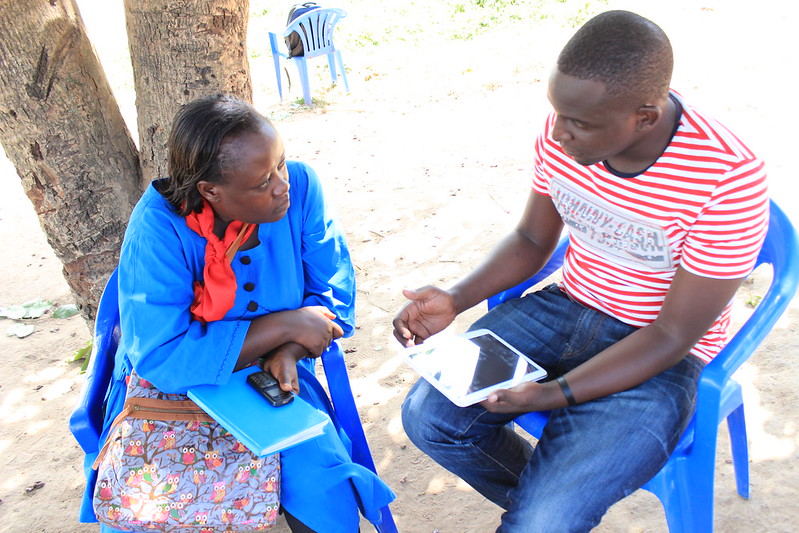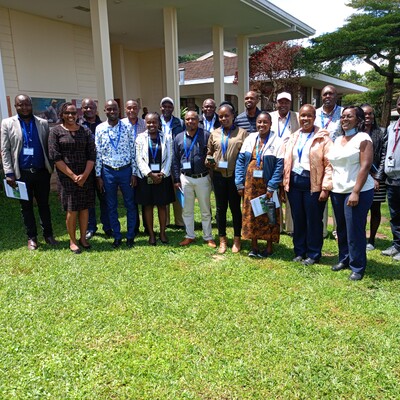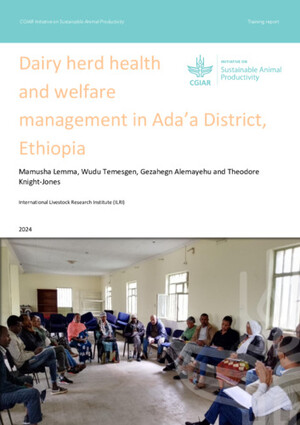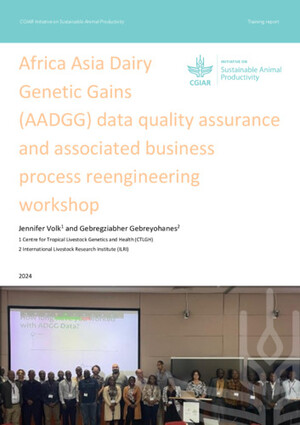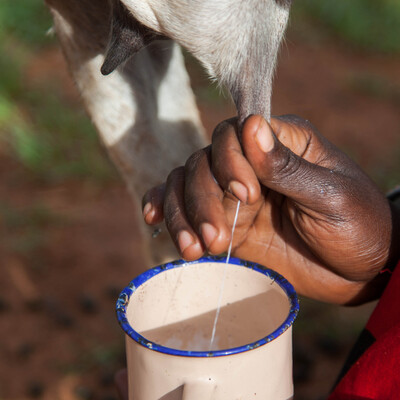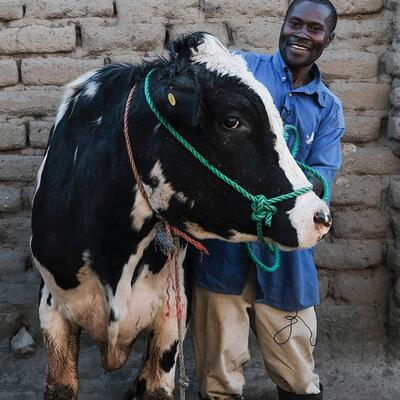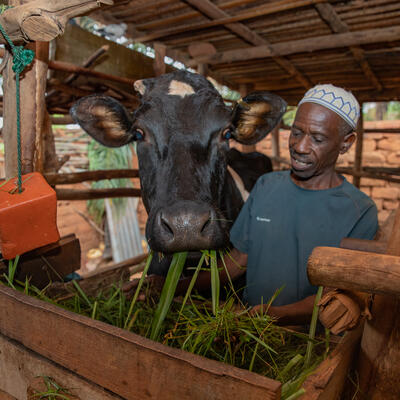
Filling up the milk can: Dairy farmers gain from using mobile phones to record yields
By Omondi Immaculate and Absolomon Kihara

A collection of mobile phones used by farmers enrolled for the Ng’ombe planner system under the EADD project (photo credit: ILRI/Immaculate Omondi).
The increasing mobile penetration in Sub Saharan Africa, where most households now have access to a mobile phone, is offering unique opportunities for researchers to use mobile-based information systems to make data collection and analysis easier and more efficient across the continent.
In the East Africa Dairy Development (EADD), a regional project that is helping farmers boost milk and dairy production in Kenya, Tanzania and Uganda, smallholder dairy farmers who are part of the project’s dairy hubs are set to benefit from an innovative and interactive mobile-based system that allows them to effectively record farm events and have access to information and services that help them enhance the productivity of their livestock.
‘Ng’ombe Planner’, a mobile-based tool designed to work with nearly any mobile telephone (handset and mobile service provider), is being used by the project to continuously collect production and reproduction data from farmers as part of the project’s monitoring and evaluation activities in the selected project sites in Kenya and Uganda. In Kenya, the mobile-based system is implemented in collaboration with the Kenya Dairy Farmers Federation, while in Tanzania, the data are collected by livestock extension officers using tablets.
Monitoring progress toward impact is a key process in many development projects and findings of monitoring exercises inform the effectiveness of the project interventions thereby helping project designers and implementers know where project implementation adjustments are needed. But collecting large amounts of data, such as the one coming through the EADD project has often been difficult to manage for development facilitators like EADD staff.
A participatory approach to monitoring and evaluation
Ng’ombe Planner makes this process much easier. The tool ensures timely and effective data collection, data integrity, and timely and effective dissemination of feedback to farmers, and project management team for easier and faster decision-making. Its benefits include enabling data to be collected electronically right at the source (at the household and farm) and sent to a processing server where it is analysed and meaningful figures derived within a short time. In addition, the tool presents an opportunity for development facilitators and researchers to disseminate their project findings as well as information to the farmers directly.
‘This tool is improving coordinated interaction between farmers, extension officers and the project management,’ said Immaculate Omondi, a researcher at ILRI who leads the roll out of the tool.
Farmers are first trained to use the system, thus enabling them to take charge of their own production recording of events such as for feeding, milking, animal health and breeding information. This information is then analysed by EADD project researchers and the results are shared with farmers through the same mobile phones.
This way, the farmers are exposed to accurate information regarding performance of their livestock and can use the feedback to improve their husbandry practices. Furthermore, Ng’ombe Planner improves links between actors in the value chain. For example, some information deduced from the farmers’ data such as records of disease incidences and signs of oestrus are instantaneously shared with the extension officers for prompt assistance to the farmers, if needed.
Extension officers working with the project are using the tool to disseminate important information, such as on disease epidemics or vaccination campaigns and are notified immediately a farmer records an adverse farm event, such as disease incidence, so that they can take steps to assist affected farmers.
A flexible cheaper method of monitoring productivity
The tool is translated to the local languages, making it versatile enough for use in different communities while ensuring that the farmers are able to understand and use it with ease. The collected data is automatically saved on an online server where high level analysis takes place and meaningful information and analysis are extracted. This information is channeled back to the farmers as feedback.
So far, the Ng’ombe planner system has been well received by farmers in the study sites. A total of 496 farmers under the EADD project are now registered on the platform, 308 farmers in Uganda while 188 farmers were recruited in Kenya.





